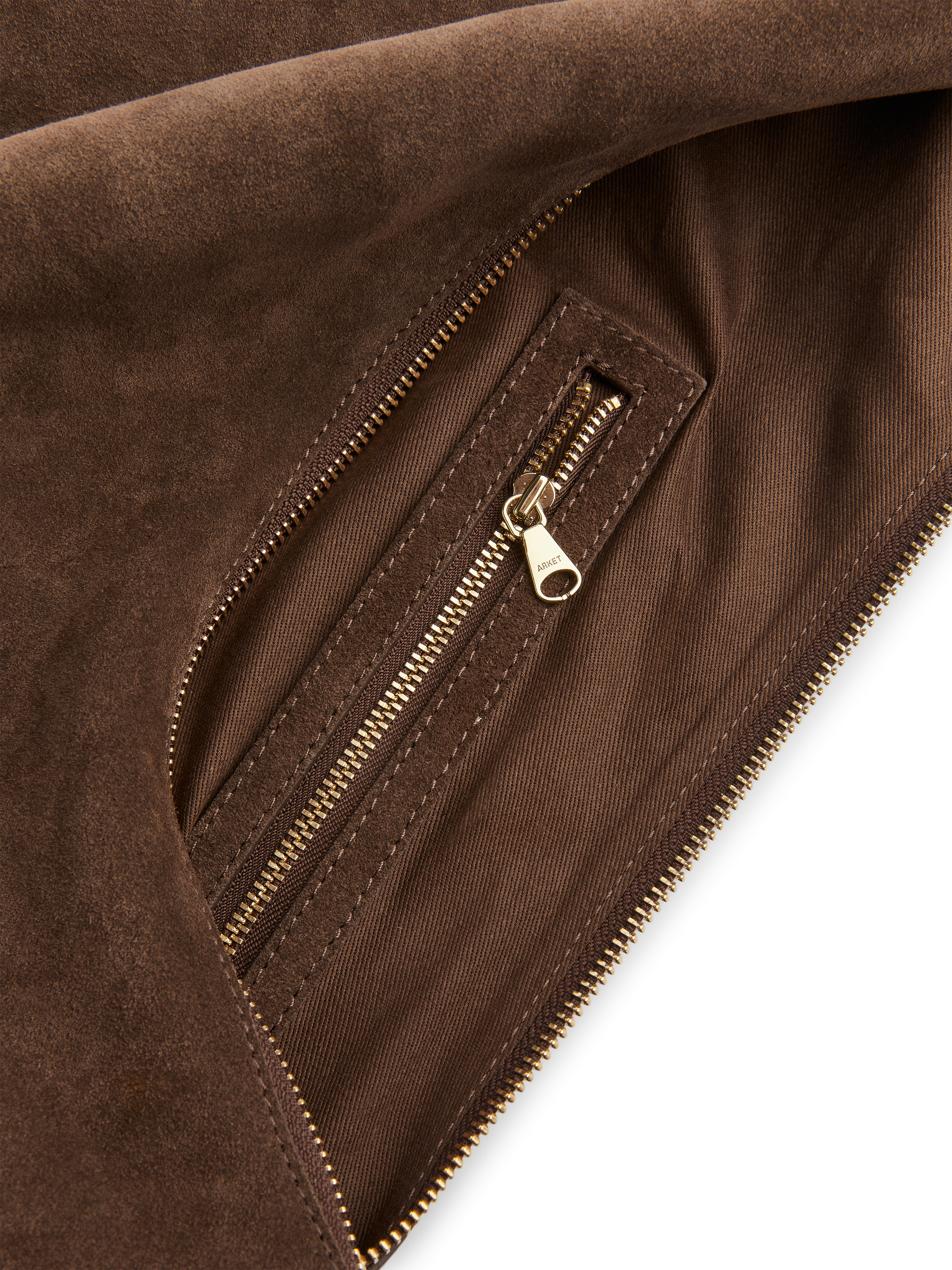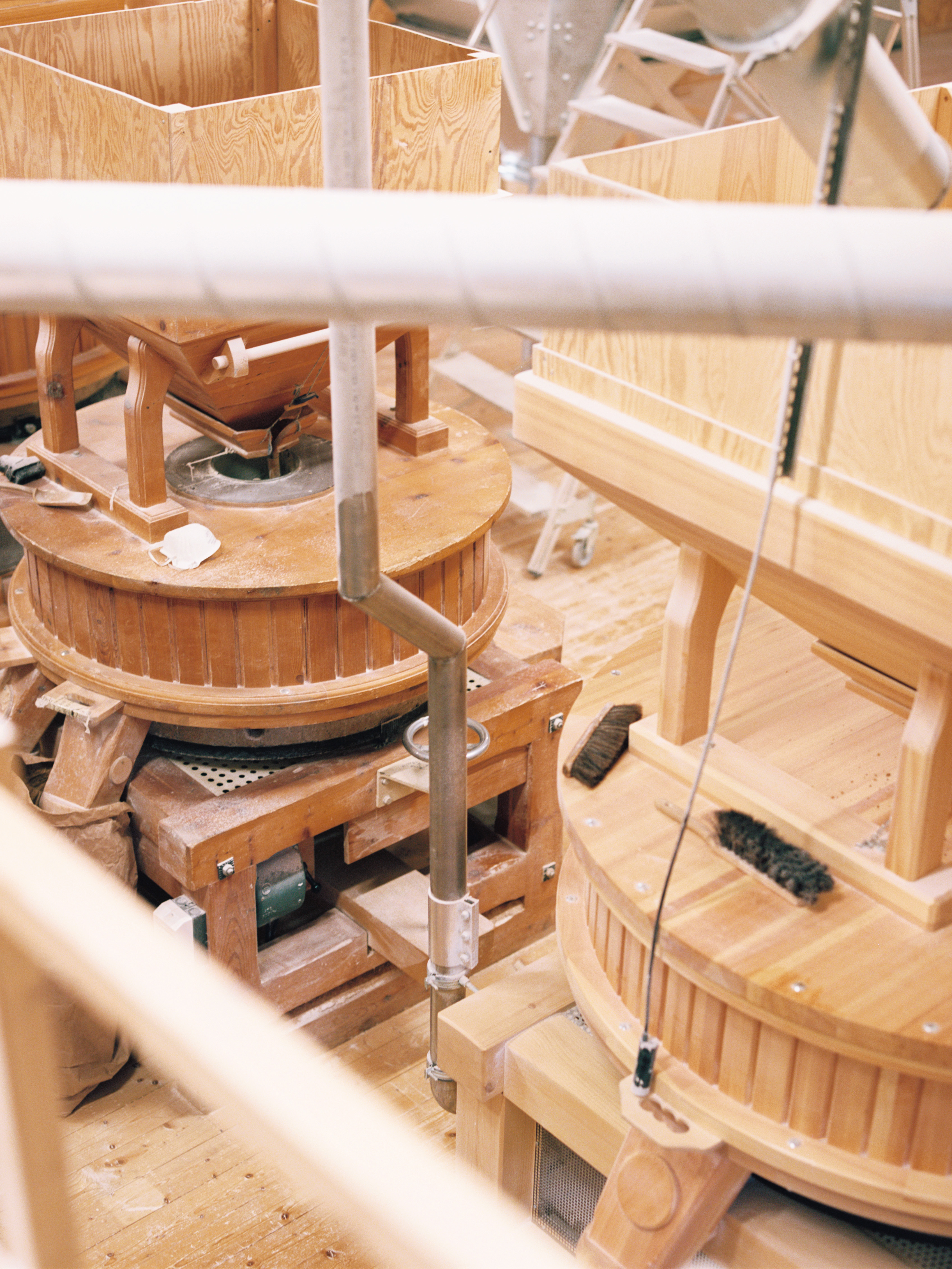Knowledge Kerstin Neümuller is an author, tailor and former owner of the store and mending studio Second Sunrise on Södermalm in Stockholm. Her book ‘Lappat & lagat ’ was published in Sweden in 2018 and in an English edition (‘Mend & Patch', Pavilion Books) in June 2019.
Repairs have always been part of the language of denim. They extend the lifespan of a cherished garment but can also add a new personal layer to the existing fabric, transforming rips and tears and wear into artworks. Once a natural necessity, the craft of mending is now a conscious and playful choice which can serve as a tool for empowerment and change, says Stockholm-based mending expert Kerstin Neumüller. 'Most people today don’t need to repair their clothes. We can easily buy something new instead. But if you invest in pieces that make you feel comfortable and confident and good about yourself, you’ll want to take care of them and use them for as long as possible. You’ll also notice that clothes made from genuine materials actually get better with time, not worse. They’re worth keeping on to, and you eventually establish a bond to them. Repairing your own clothes strengthens that relation and will even fill the garments with new meaning.
'Repairing your own clothes strengthens that relation and will even fill the garments with new meaning'
But I think this is bigger than just clothing. It’s about establishing and manifesting yourself as someone who can change your surroundings – as a competent person who knows how to take care of themselves, someone with more solutions to a problem than consuming. We’ve been taught that’s the way to solve things; we pay someone else to do it for us. But here’s a first step in the opposite direction: ‘I can do this on my own.’
Of course, sometimes a mending just means that a broken or worn-out garment can be continued to be used. You fix a hole in the trousers you wear when chopping wood, using a patch and a bit of glue. You prolong their life, no drama, the end.
That’s why patchwork and crude mending are part of the language of denim but not of fine cashmere jumpers or dress shirts. Jeans are workwear. They’re practical, not formal, so repairing them was never a big deal. If you’d ask your mum if she could help fix up your evening dress she’d say no, can’t do it. But a pair of jeans? No problem.
Denim is also associated with youth culture and casual fashion, and the do-it-yourself values and expressions of the hippie movement still echo today. Another factor is that fades and wear are an intrinsic part of the denim world. You have to wear your jeans for a long time for them to develop their characteristic nuances. And just when they’re their most beautiful and comfortable, they come apart. Pushing your clothes to that level of wear is unique to denim, and that obviously creates a need for repairs.
The influence from ancient Japanese techniques like boro and sashiko has certainly helped revive the interest for visual mending in recent years. Japanese culture resonates so well with our longing for provenance and authenticity. I hope to see similar mending traditions from other cultures, such as Indian kantha textiles, getting wider recognition as well in the wake of the current trend.
People are drawn to the playful aesthetic of visible mending. I think that’s where a lot of the appeal lies. Many of us might have memories of an angry needlework teacher who told us that everything needs to be perfect, that your project has to look as neat and clean on the backside as on the face of the fabric. And then you feel there’s no point in even trying; it’s too complicated.
Visual mending is approachable and allowing – anything goes, everyone can join – which brings a fun and positive vibe to handicraft that’s more inviting to the beginner. All you need is thread, needle and a patch of a beautiful fabric, and the stitches can even be a fun little embroidery. There’s a lot of freedom and playfulness in that approach.
After a while you’ll probably want to learn more, and you start do dig deeper. What else can I do? What else am I able to do? Because it’s not every day you want to walk around in a crazy shirt or with a big red patch on your jeans.
It may seem like an absurd idea that us individuals would help save the planet by repairing our clothes. But I see it as a very hands-on way of dealing with climate anxiety. And I think if our generation start changing things and prove to ourselves that we’re competent and able people – who can cook new food, fix the car when it’s broken, or repair our own clothes – then we’ll pass these positive intentions on to our children.
Maybe that’s a much more potent movement than we think. It’s about instilling a sense of power and confidence. Maybe it doesn’t matter whether you know perfect grammar, if you’ve at least been inspired to explore the amazing world of languages."
Kerstin's tips for mending denim
1 You don’t have to use a sewing machine. You can do almost everything by hand.
2 Don’t be afraid to try. If the only thread and needle you own are from a hotel sewing kit, then that’s great. Use it, have a try. Just don’t expect it to be perfect on your first attempt. The simpler the tools, the more is required of you. Sewing by hand demands a lot of technique and motor skills and we’re not born with those. It’s scary to try and fail but it’s not dangerous. You’ll learn a lot from your mistakes.
3 Utilise the knowledge around you. Ask someone you trust for help. No one is a natural-born expert in every field, and that’s why people specialise in different things. Don’t feel bad for not knowing how to do this before you’ve started.
4 Many people believe they have to pull the stitches really hard for it to be a strong repair. I’ve done it myself. But it’s not true. The stitches are not supposed to lie in loose loops on the fabric – but they don’t have to be super tight either. We want them to look like round grains of rice, not like angry little mouths with the lips pressed together. Otherwise, the fabric around them will be tense and bubbly, and the entire surface will look unhappy. Try to work with a soft hand.
5 When you’re repairing a rip, it’s better to place a patch underneath, inside the leg, and sew around the edges rather than just stitching over the hole.
6 It’s OK to glue on a patch. It’s not the best solution but it works. It actually works great – and it will do the job for a while.



